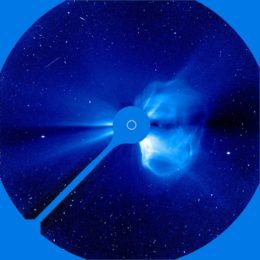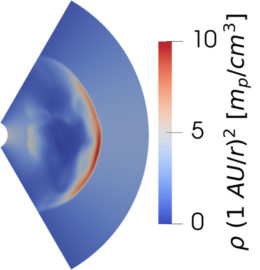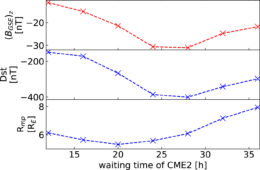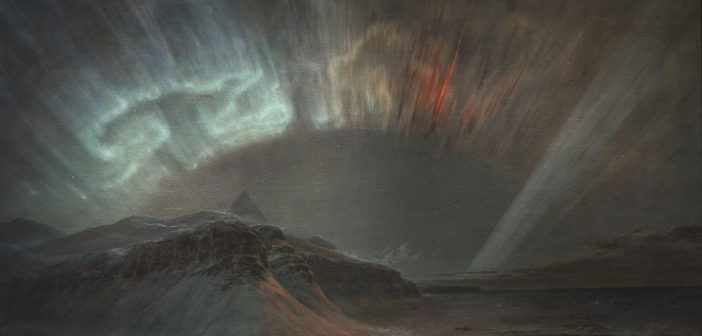Earth sits in a sea of plasma that is usually calm. Sometimes, though, solar storms streak across space, and new research explores what can happen when two storms collide before reaching Earth.
Solar Storms on the Horizon

The Solar & Heliospheric Observatory (SOHO) took this coronagraphic image of a coronal mass ejection on 20 April 1998. [SOHO (ESA & NASA)]
A single CME is already powerful, but successive CMEs can crash into each other and combine, creating even larger storms. There’s evidence that some of the most intense solar storms that we know of, like the 1859 Carrington event that pushed the Northern Lights south to the Caribbean, resulted from two or more CMEs joining forces. In a recent publication, Gordon Koehn (Imperial College London) and collaborators sought to understand how to produce the strongest solar storm possible from the collision of two CMEs — the “perfect” storm.

Example of model output 30 hours after the launch of a single CME. The color scale shows the normalized plasma density. [Adapted from Koehn et al. 2022]
Magnetic Modeling
Koehn and coauthors used magnetohydrodynamic models to simulate pairs of CMEs and determine the strength of the resultant storm. The team explored three factors: the tilt of the CMEs with respect to Earth’s magnetic field, how their magnetic fields twist, and the time between the first and second CME being launched from the Sun.
To quantify the strength of the storms, the team measured how compressed Earth’s simulated magnetic field was and calculated the Disturbance Storm Time (Dst) index — a measure of the electric current generated by the incoming solar plasma — which is a common measure of a storm’s severity.
Scaling Storm Severity
Koehn and collaborators first simulated just one CME to test the effects of changing its orientation. They found that when the CME is oriented so that its magnetic field exactly opposes Earth’s, it causes the largest disturbance. This is because the oppositely directed magnetic fields rearrange when they meet, peeling back Earth’s protective magnetic field and allowing solar plasma to stream into the atmosphere.

Southward-pointing magnetic field (top), Dst index (middle), and the distance to the magnetopause (bottom) — the boundary between the region dominated by Earth’s magnetic field and the solar wind — as a function of the time between the CMEs. [Adapted from Koehn et al. 2022]
Lastly, the team found that changing the direction in which the CMEs’ magnetic fields twist can convert a moderate storm into a severe one. Each of these three tests showed that changing the characteristics of two colliding CMEs can dramatically change the outcome of their collision, emphasizing the need for precise modeling of CME interactions to support space weather forecasting.
Citation
“Successive Interacting Coronal Mass Ejections: How to Create a Perfect Storm,” G. J. Koehn et al 2022 ApJ 941 139. doi:10.3847/1538-4357/aca28c

